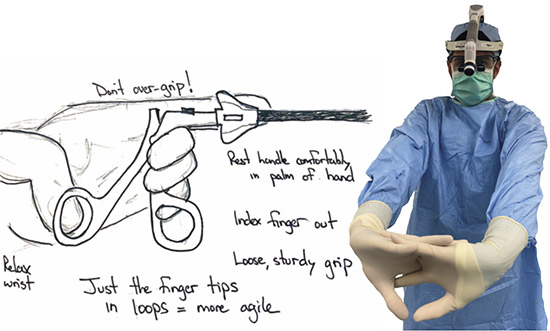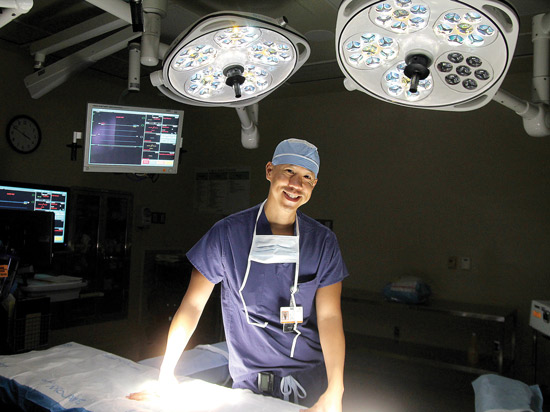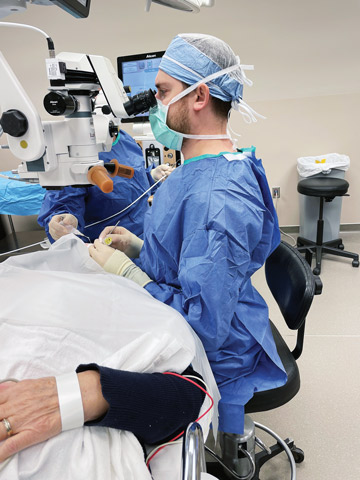Surgeons undergo years of intense training to learn how to return patients to good health, yet receive little instruction on how to maintain their own well-being. After long days in the OR, their necks stiffen, backs ache and shoulders throb. They often shrug off the pain and hope it goes away, even though it usually doesn’t.
Graeme Rosenberg, MD, who’s in his last year of general surgery residency at Stanford (Calif.) Health Care, remains physically fit for surgery through stretches and — sketches? “Early in my residency, I’d draw illustrations in my notebook of surgical steps so that I could remember the coaching I received in the OR, and refer back to it later,” explains Dr. Rosenberg. “I thought the drawings could be helpful to other surgeons, and started sharing them on Twitter.”
His sketches, brilliant in their simplicity, depict a variety of tips, tricks and lessons he’s learned during his early career, including how to position equipment and his body to mitigate the debilitating pain caused by standing in static positions for hours on end. He jots down important reminders in the margins about the essentials of surgical ergonomics: Position video monitors at eye level and straight ahead. Keep your shoulders down, arms loose and elbows in. Remember to breathe!
In his first year of residency, Dr. Rosenberg spent countless hours standing in ORs, watching surgeons in action and learning from their techniques. One of the biggest takeaways came from how he felt instead of what he saw. “You aren’t as focused on the patient as you would be if you were operating, so it’s easier to feel and be more aware of the discomfort in your shoulders, back, feet and legs,” he says.
Dr. Rosenberg began to experience chronic lower back pain, which he attempted to alleviate by trying five different types of footwear. The pain persisted, however, so he started doing yoga. That lessened his discomfort because he was becoming more flexible, and his core was getting stronger. “I try to do yoga every day, even if it’s for only 10 minutes in the morning,” he says.
No longer a young med student, Dr. Rosenberg is more hands-on in the OR, and more aware of ergonomics. He admits to already feeling the physical effects of long hours spent in surgery. He’ll be 35 years old when his residency ends later this year, and doesn’t want to begin his career as a thoracic surgeon feeling like it’s over before it starts.
“I’ve been very focused the last couple of years on how I stand and position my elbows, and where video monitors are placed to improve my ergonomics,” says Dr. Rosenberg. “As I start performing cases that last six, eight or even 10 hours, the little things I do to preserve my physical health will pay off down the road.”
.svg?sfvrsn=be606e78_3)




.svg?sfvrsn=56b2f850_5)